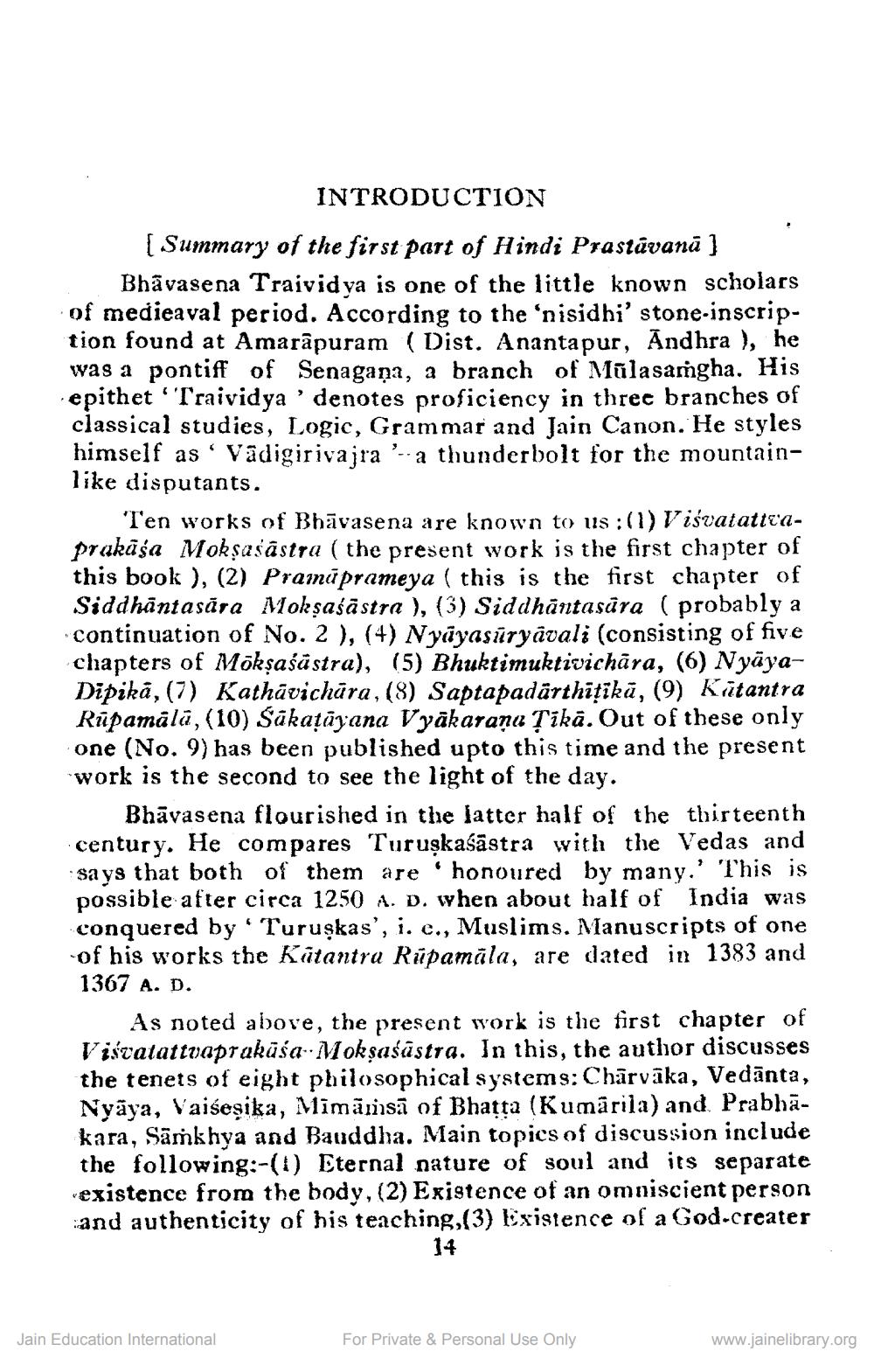________________
INTRODUCTION [ Summary of the first part of Hindi Prastāvanā ]
Bhāvasena Traivid ya is one of the little known scholars of medicaval period. According to the 'nisidhi' stone-inscription found at Amarapuram (Dist. Anantapur, Andhra ), he was a pontiff of Senagana, a branch of Malasamgha. His epithet 'Traividya’denotes proficiency in three branches of classical studies, Logic, Grammar and Jain Canon. He styles himself as' Vâdigirivajra '-.a thunderbolt for the mountainlike disputants.
Ten works of Bhāvasena are known to us :(1) Visvatattenprakāśa Moksašāstra ( the present work is the first chapter of this book ), (2) Pramāprameya ( this is the first chapter of Siddhāntasāra Mokşaśāstra ), (3) Siddhāntasāra (probably a continuation of No. 2 ), (+) Nyāyasuryavali (consisting of five chapters of Mökşaśāstra), (5) Bhuktimuktivichāra, (6) NyāyaDipikā, (7) Kathāvichāra, (8) Saptapadārthiţikā, (9) Kitantra Rūpamála, (10) Sākațājana Vyakaranı Tīkā. Out of these only one (No. 9) has been published upto this time and the present work is the second to see the light of the day.
Bhāvasena flourished in the latter half of the thirteenth century. He compares Turuşkaśāstra with the Vedas and says that both of them are honoured by many.' This is possible after circa 1250 A. D. when about half of India was conquered by' Turuşkas', i. e., Muslims. Manuscripts of one of his works the Katantra Rūpamāla, are dated in 1383 and 1367 A. D.
As noted above, the present work is the first chapter of Vistatattvaprakāśa Mokşaśāstra. In this, the author discusses the tenets of eight philosophical systems: Chārvāka, Vedānta, Nyāya, Vaišeşika, Mīmāsā of Bhatta (Kumārila) and Prabhākara, Samkhya and Bauddha. Main topics of discussion include the following:-(1) Eternal nature of soul and its separate existence from the body, (2) Existence of an omniscient person and authenticity of his teaching,(3) Existence of a God.creater
14
Jain Education International
For Private & Personal Use Only
www.jainelibrary.org




